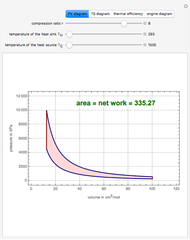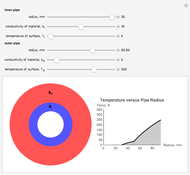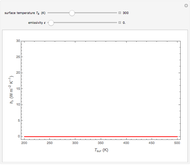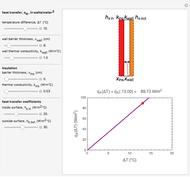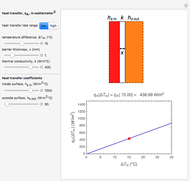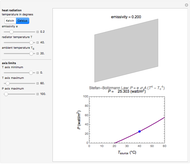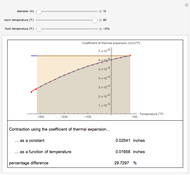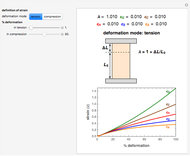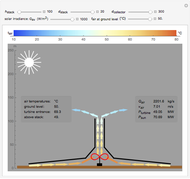Refrigeration Cycle Coefficient of Performance

Requires a Wolfram Notebook System
Interact on desktop, mobile and cloud with the free Wolfram Player or other Wolfram Language products.
This Demonstration illustrates how to calculate the coefficient of performance (COP) of an ideal mechanical refrigeration system using a pressure-enthalpy diagram. Use the sliders to set the enthalpies of the refrigerant at the four principal points in the cycle. The COP value is displayed above a schematic drawing of the mechanical refrigeration system that shows where energy enters and leaves and the refrigerant's flow direction. A plot of pressure versus enthalpy for the selected cycle is shown below the drawing.
Contributed by: Mark D. Normand and Micha Peleg (March 2011)
Open content licensed under CC BY-NC-SA
Snapshots
Details
Snapshot 1: a very inefficient mechanical refrigeration cycle with a coefficient of performance (COP) less than 1
Snapshot 2: an inefficient mechanical refrigeration cycle with a coefficient of performance (COP) equal to 1
Snapshot 3: an efficient mechanical refrigeration cycle with a coefficient of performance (COP) equal to 9
This Demonstration is intended to illustrate the use of the pressure-enthalpy diagram to calculate the energy efficiency of an ideal mechanical refrigeration system in terms of its coefficient of performance (COP). It calculates and displays the COP from the enthalpies at the four principal points in the cycle A, B, C, and D with the formula  , where the
, where the  's are the enthalpies.
's are the enthalpies.
A schematic view of the mechanical system is displayed below the calculated COP value. It shows the main components, the refrigerant's flow direction and where energy enters and leaves. The pressure-enthalpy diagram is shown next. The enthalpy values are in  while the pressure, which does not enter into the calculation, is presented on an arbitrary scale. The cold side of the cycle is shown in blue and the hot side in red.
while the pressure, which does not enter into the calculation, is presented on an arbitrary scale. The cold side of the cycle is shown in blue and the hot side in red.
Note that certain allowable combinations of enthalpy values are not possible in actual refrigeration systems.
Permanent Citation






